HR & Digital Transformation: How to Drive HR Change (2024)
- Published:
- Updated: July 3, 2024

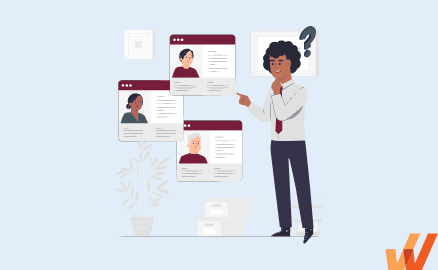
In the digital age, HR has emerged as a strategic driver of organizational success, leading the charge in attracting, developing, and retaining top talent. Gone are the days when HR was primarily focused on administrative tasks and personnel management.
The HR function is now at the forefront of innovation, leveraging technology, data analytics, and a deep understanding of human behavior to shape workplaces that are not only efficient and compliant but also inclusive, engaging, and adaptable.
In fact, the global HR tech market is projected to soar to a staggering $30 billion by 2025.
This article will discuss what HR digital transformation looks like in practice, why organizations need to embrace this change, examples of how companies are conducting HR digitalization successfully, the forces shaping it, the strategies driving its evolution, and the impact it has on businesses and their employees in an era of unprecedented change.
What is HR Digital Transformation?
HR transformation is the strategic process of leveraging technology, data, and digital tools to revolutionize and enhance the entire human resources function within an organization. It involves the adoption of cutting-edge software, automation, analytics, and artificial intelligence to streamline HR processes, from recruitment and onboarding to talent management, employee engagement, and workforce planning.
HR transformation aims to create a more agile, data-driven, and employee-centric HR department, enabling organizations to make data-informed decisions, improve employee experiences, and respond effectively to the evolving needs of the workforce in an increasingly digital and globalized business environment.
Examples of Digital Transformation in HR
What does HR digital transformation look like in practice? Here are seven examples of powerful digital possibilities for your organization.
1. Digital onboarding
Digital onboarding is a prime example of how HR transformation is revolutionizing traditional HR practices. It represents a shift from manual, paper-based onboarding processes to more efficient, technology-driven approaches.
Here’s a detailed explanation of how digital onboarding is driving HR transformation:
- Paperless process automation: Unlike manual onboarding, that involves stacks of paperwork, including employment contracts, tax forms, and policy acknowledgments, digital onboarding eliminates the need for paper, streamlining the process through automated workflows. New employees can complete all necessary documentation electronically, from any location, using secure online platforms. This reduces administrative burden, minimizes errors, and accelerates the onboarding timeline.
- Efficiency and time savings: Digital onboarding significantly reduces the time required to onboard new employees. HR teams can prepopulate forms with relevant information, and employees can electronically sign and submit documents quickly. This efficiency translates into faster integration of new hires into the workforce, allowing them to become productive contributors sooner.
- Personalization: Digital onboarding platforms allow organizations to create customized onboarding experiences. New employees can receive tailored content, including welcome messages, videos, and training materials specific to their roles and departments. Personalization fosters a sense of belonging and engagement from day one and also enhances user experience.
- Data collection and analytics: Digital onboarding facilitates the collection of valuable data related to the onboarding process. HR professionals can track metrics such as onboarding completion rates, time-to-productivity, and employee feedback. These analytics provide insights into the effectiveness of onboarding strategies and allow for continuous improvement.
- Remote onboarding: With the rise of remote and hybrid work models, digital onboarding has become a lot more valuable. Organizations can efficiently onboard employees regardless of their physical location. This flexibility is essential for attracting and retaining talent in a global and remote workforce.
- Scalability: Digital onboarding is scalable, accommodating the needs of organizations experiencing growth or fluctuations in hiring volumes. It can handle onboarding processes for a few hires or hundreds, ensuring consistency and efficiency regardless of the scale.
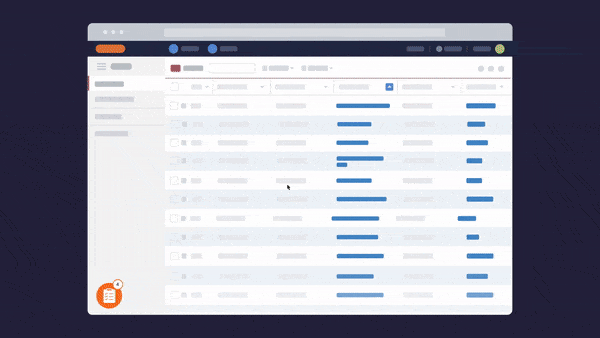

Robert Kovach, Management Consultant, Business Psychologist

2. Employee self-service portals
Employee self-service portals (ESS) represent a significant example of HR digital transformation by fundamentally changing the way employees access HR services and information while empowering HR teams to operate more efficiently. Here’s how ESS portals embody HR transformation:
- Streamlined access to HR services: ESS portals provide employees with a centralized, digital platform where they can access a wide range of HR services and information 24/7. From viewing pay stubs and tax documents to requesting time off and updating personal information, employees have convenient, self-service access to HR resources.
- Enhanced employee empowerment: ESS portals empower employees to take control of their HR-related tasks. They can independently make changes to their personal information, track their time off balances, and access important HR documents. This self-sufficiency not only reduces the burden on HR staff but also fosters a sense of autonomy and responsibility among employees.
- Efficient information retrieval: ESS portals serve as knowledge hubs, providing employees with easy access to policies, procedures, handbooks, and FAQs. Employees can quickly find answers to common HR-related questions, reducing the need for HR professionals to address routine inquiries. Moreover, the portals can be updated in real-time, ensuring that employees always have access to the latest information.
- Analytics and reporting: ESS portals generate valuable data that can be leveraged for HR analytics. HR teams can track user activity, identify trends in employee behavior, and gain insights into common requests or issues. These analytics inform HR strategies, helping organizations make data-driven decisions to improve employee engagement and HR processes.
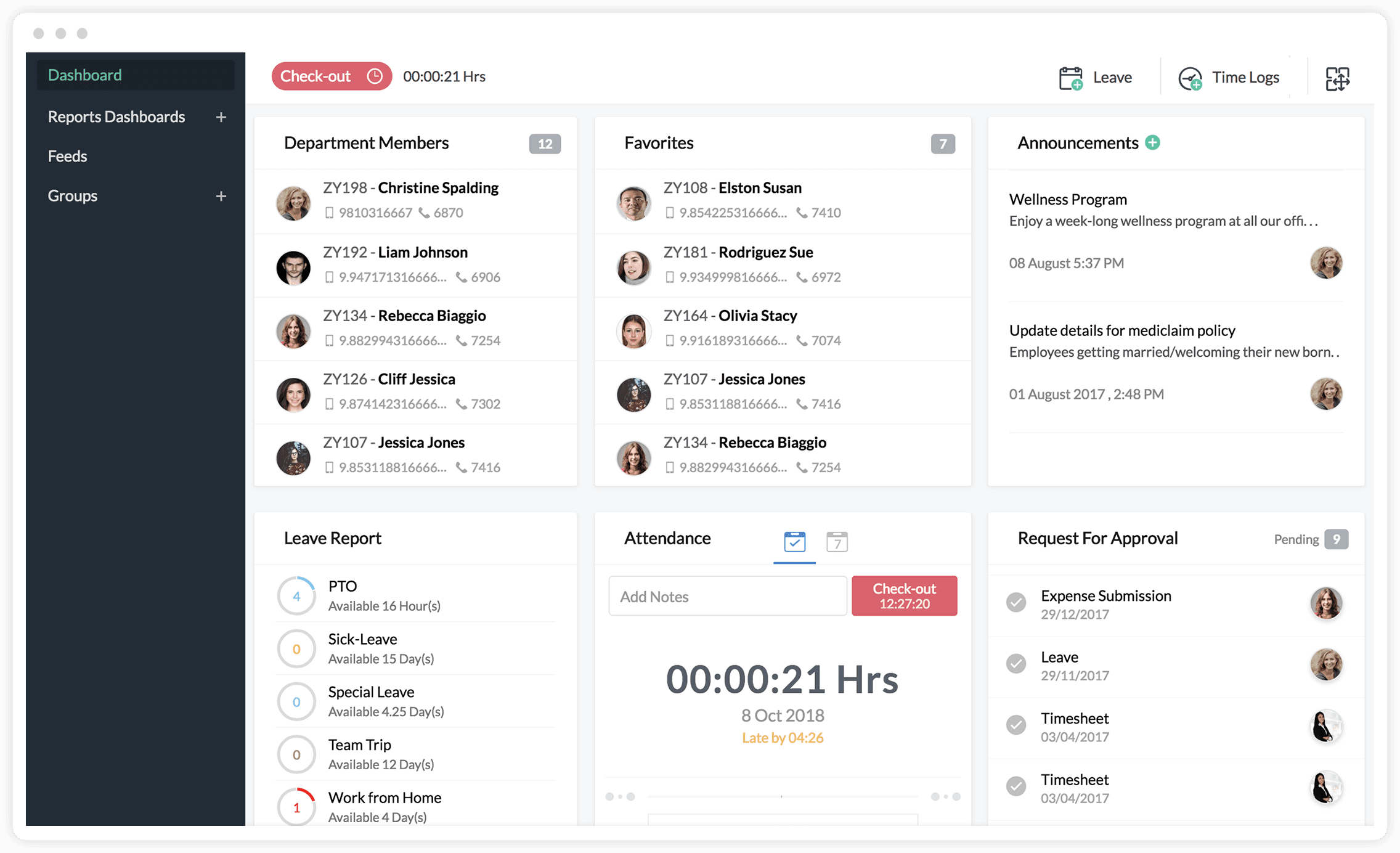
3. People analytics
People analytics represents a shift from traditional HR practices to data-driven decision-making. It involves leveraging technology and advanced data analytics to gain valuable insights into the workforce.
- Data-driven decision-making: People analytics harnesses data from various HR systems and sources, such as HRIS, recruitment software, performance management platforms, and employee surveys. This data is processed and analyzed to derive actionable insights. Instead of relying on intuition, HR professionals can make evidence-based decisions on matters like talent acquisition, employee engagement, performance management, and workforce management.
- Predictive analytics: People analytics goes beyond retrospective reporting by incorporating predictive analytics. HR teams can use historical data to forecast future workforce trends and potential challenges. For example, predictive analytics can help organizations anticipate talent gaps, high turnover risks, or identify top performers likely to be promoted.
- Talent acquisition and recruitment: People analytics allows HR teams to identify the most effective sources for finding top talent, assess the quality of candidates, and optimize recruitment strategies. By analyzing data on successful hires and applicant demographics, organizations can refine their sourcing and selection processes.
- Employee engagement and retention: Understanding what factors drive employee engagement and retention is critical for HR. People analytics can pinpoint areas of concern by analyzing survey data, turnover rates, and employee feedback. HR can then develop strategies to improve engagement, address employee concerns, and retain top talent.
- Learning and development: Data-driven insights from people analytics enable learning and development programs. HR can identify skill gaps, track the effectiveness of training initiatives, and provide personalized learning recommendations to employees, enabling continuous skill development and career growth.
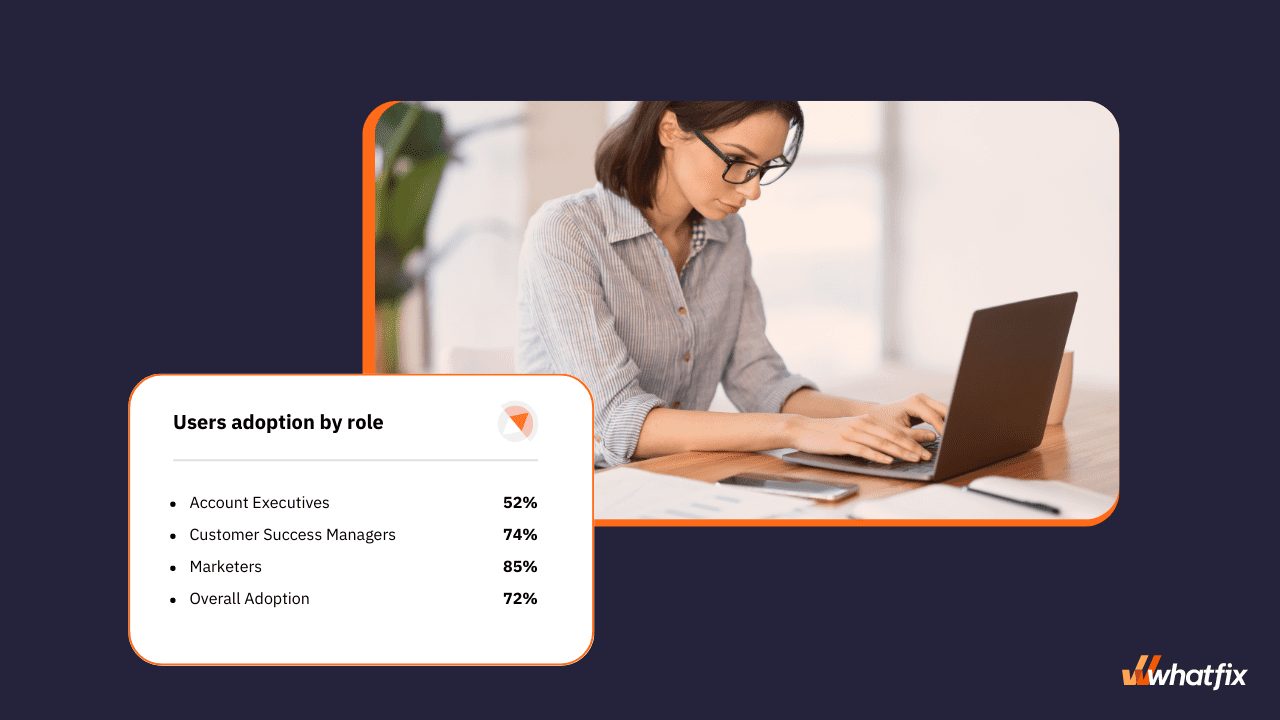
4. AI-powered applicant tracking systems
AI-powered applicant tracking systems (ATS) revolutionize traditional recruitment and talent acquisition processes through the integration of artificial intelligence and automation.
- Efficient resume screening: AI-powered ATS uses natural language processing (NLP) and machine learning algorithms to scan and analyze resumes swiftly. This automated screening process replaces the manual, time-consuming task of HR professionals sifting through stacks of resumes. The system identifies keywords, qualifications, and relevant experience, enabling recruiters to shortlist candidates more efficiently.
- Enhanced candidate matching: These systems utilize AI algorithms to match candidates to job requirements more accurately. By analyzing the skills, qualifications, and experiences of candidates in real-time, AI can identify the best-fit candidates for specific roles. This not only reduces human bias but also improves the quality of hires.
- Automated communication: AI-powered ATS can automate candidate communication, sending personalized emails and notifications at various stages of the recruitment process. This ensures a consistent and efficient candidate experience, keeping candidates engaged and informed throughout the hiring journey.
- Data-driven decision-making: AI-powered ATS generates extensive data on recruitment metrics, such as time-to-fill, source of hire, and candidate conversion rates. HR professionals can leverage these insights to make data-driven decisions, refine recruitment strategies, and allocate resources more effectively.
5. HR chatbots
HR chatbots represent a shift in the way HR departments interact with employees and address their needs. These AI-powered virtual assistants leverage natural language processing and automation to provide immediate responses and support to employees.
- 24/7 employee support: HR chatbots offer round-the-clock employee support, breaking away from traditional HR service hours. Employees can access assistance and information at any time, enhancing their convenience and flexibility. This shift to continuous support aligns with the modern work environment, which often extends beyond standard business hours.
- Efficient employee inquiries: Chatbots excel at handling routine and frequently asked questions, such as inquiries about benefits, policies, pay, and leave balances. This automation reduces the volume of repetitive queries that HR professionals must address manually, freeing up their time to focus on more complex and strategic tasks.
- Scalability: Chatbots are scalable and can handle a high volume of inquiries simultaneously, ensuring consistent and efficient support even during peak times, such as open enrollment periods or when major policy changes occur.
- Personalized support: Advanced chatbots can provide personalized responses based on employee data and preferences. For instance, they can tailor benefits recommendations or learning and development opportunities to individual needs, enhancing the employee experience and engagement.
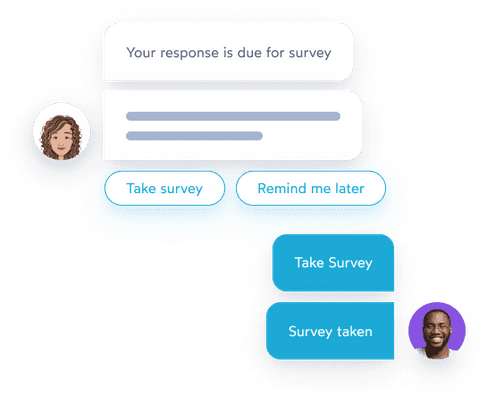
6. Digital adoption platforms
Digital adoption platforms (DAPs) represent a notable example of HR digital transformation by facilitating the integration, adoption, and effective use of digital tools and technologies within an organization. These platforms provide a comprehensive solution to guide employees through digital processes, thereby enhancing workforce productivity and optimizing HR practices. Here’s a detailed explanation of how DAPs embody HR transformation:
- Seamless onboarding and training: DAPs simplify the onboarding process for new employees by providing step-by-step interactive walkthroughs on using essential HR systems and tools. This ensures a smoother transition for new hires and accelerates their time-to-productivity. Training modules can be customized to the specific needs of each employee, facilitating more efficient skill development and knowledge acquisition.
- Enhanced employee self-service: DAPs empower employees to independently navigate HR systems and self-service portals. They offer contextual support and tutorials, allowing employees to complete tasks such as benefits enrollment, time tracking, and performance reviews without the need for extensive IT or HR support. This self-sufficiency improves the employee experience and reduces the administrative burden on HR professionals.
- Change management support: During HR digital transformation initiatives, such as the implementation of new HRIS or talent management systems, DAPs guide employees through the changes. They provide real-time assistance, answer questions, and offer immediate solutions to common issues, reducing resistance to change and facilitating a smoother transition.
- Analytics and data insights: Digital adoption platforms collect data on employee interactions with digital tools. HR teams can analyze this data to gain insights into user behavior, identify pain points, and optimize digital processes. These analytics enable HR professionals to make data-driven decisions, refine HR strategies, and continuously improve the employee experience.
- Personalization and user segmentation: DAPs can tailor the guidance and support provided to individual employees or groups based on their roles, preferences, and proficiency levels. This personalization ensures that employees receive relevant and targeted assistance, making the learning process more efficient and effective.

Software clicks better with Whatfix's digital adoption platform
Enable your employees with in-app guidance, self-help support, process changes alerts, pop-ups for department announcements, and field validations to improve data accuracy.
7. Cloud-based HCM and HR systems
Cloud-based HCM systems exemplify a significant paradigm shift in HR management and administration, showcasing how technology can drive HR transformation within organizations. Traditional HR processes often relied on manual paperwork, spreadsheets, and on-premises software, leading to inefficiencies, data silos, and limited accessibility. Cloud-based HR systems like UKG Pro, on the other hand, leverage cloud technology to centralize and streamline HR functions.
- Enhanced accessibility and mobility: Cloud-based HR systems break down geographical barriers. HR professionals, employees, and managers can access HR data and services from anywhere with an internet connection. This mobility is particularly valuable in today’s increasingly remote and globalized workforce. It ensures that HR services are available 24/7, fostering employee self-service and reducing the dependency on HR personnel for routine inquiries.
- Cost efficiency: Traditionally, on-premises HR software required substantial upfront investments in hardware, software licenses, and maintenance. Cloud-based solutions eliminate the need for such capital expenditures. Organizations pay subscription fees based on their usage, allowing for more predictable costs. This cost-efficiency extends to IT resources, as cloud providers handle server maintenance, updates, and security, freeing up IT personnel for strategic initiatives.
- Scalability and flexibility: Cloud-based HR systems are highly scalable. Organizations can easily adjust their usage and storage requirements as they grow or contract, eliminating the need for significant infrastructure changes. This adaptability supports organizational agility, enabling HR departments to respond quickly to changing business needs, such as mergers, acquisitions, or workforce expansions.
- Data centralization and integration: Cloud-based systems centralize HR data, eliminating silos that often exist in traditional HR processes. This enables comprehensive reporting and analytics, providing HR professionals with valuable insights for talent management, succession planning, and workforce optimization. Integration capabilities allow HR systems to connect seamlessly with other business software, such as finance and payroll, ensuring data consistency and accuracy.
The Stages of HR Digital Transformation
HR Digital Transformation typically progresses through several stages, each building upon the previous one, to ultimately become an innovative and adaptive function.
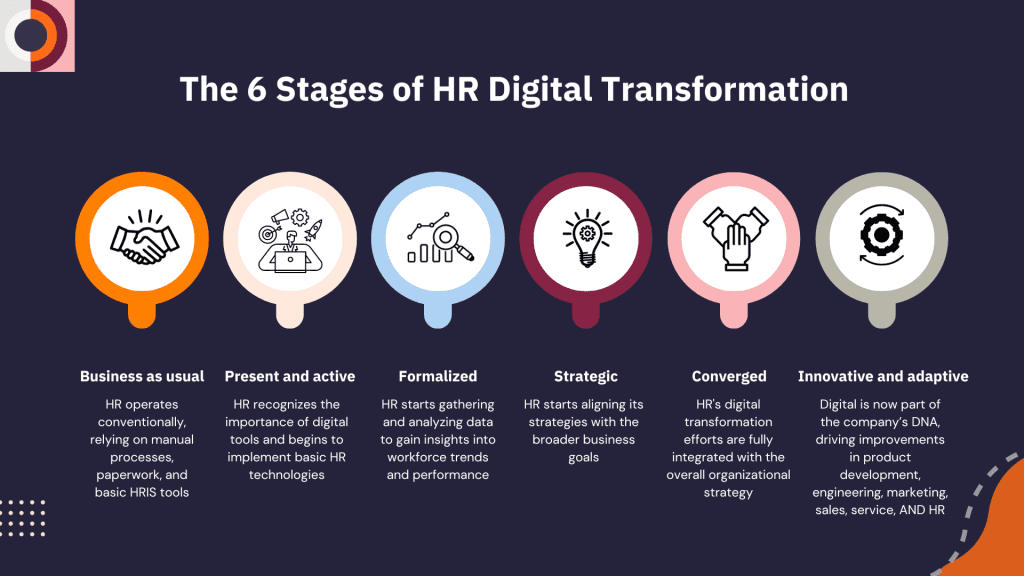
Stage 1: Business as usual
In this initial stage, HR operates conventionally, relying on manual processes, paperwork, and basic HRIS tools. There’s minimal automation, and HR’s focus is primarily on administrative tasks such as payroll and benefits administration.
Stage 2: Present and active
At this stage, HR recognizes the importance of digital tools and begins to implement basic HR technologies. Common HR processes such as recruitment, employee records, and performance evaluations are automated to some extent. HR starts to actively use digital platforms for communication and documentation.
Stage 3: Formalized
In this stage, HR formalizes its digital strategies and invests in more advanced HR technologies. There’s a clear roadmap for digital transformation, and data-driven decision-making becomes more prevalent. HR starts gathering and analyzing data to gain insights into workforce trends and performance.
Stage 4: Strategic
HR becomes a strategic partner to the organization as it enters this stage. Data analytics and automation are deeply integrated into HR processes, enabling better workforce planning, talent acquisition, and employee engagement. HR starts aligning its strategies with the broader business goals.
Stage 5: Converged
In this stage, HR’s digital transformation efforts are fully integrated with the overall organizational strategy. HR collaborates closely with other departments, such as IT and finance, to leverage emerging technologies such as AI and machine learning for predictive analytics, succession planning, and personalized employee experiences.
Stage 6: Innovative and adaptive
No longer “just” HR digital transformation, digital is now part of the company’s DNA, driving improvements in product development, engineering, marketing, sales, service, AND HR. An innovation team tracks new technological developments to identify ongoing opportunities for improvement.
Roadmap to HR Digital Transformation
HR Digital Transformation is a multifaceted journey that involves several key steps to ensure its success.
1. Assess current HR processes
Assessing current HR processes involves a comprehensive evaluation of how HR tasks are currently performed within the organization. Begin by documenting existing processes, workflows, and data flows. This includes everything from recruitment and onboarding to performance management and employee records management. Process mapping and flowcharts can be used for visualizing these processes.
Additionally, gather feedback from HR professionals and employees to identify pain points and inefficiencies within the workforce. Also analyze historical HR data to uncover trends and areas in need of improvement, such as high turnover rates or delays in recruitment. This assessment provides the critical insights needed to determine where digitalization can have the most significant impact.
2. Set clear objectives
Clear and well-defined objectives serve as a roadmap for the transformation journey, ensuring that efforts are focused and measurable. Define SMART (Specific, Measurable, Achievable, Relevant, Time-bound) goals that align with the broader strategic goals of the organization.
For example, reducing the time it takes to fill job vacancies by 20% within six months or improving employee engagement scores by 10% in the next year. Objectives must address the specific challenges identified during the assessment phase.
3. Create a digital transformation team
Building a dedicated digital transformation team is crucial for driving the process effectively. This team consists of individuals with diverse skill sets, including HR professionals, IT experts, data analysts, project managers, and change management specialists. You can even enlist external help in the form of a digital transformation consultant.
The team’s composition must reflect the various aspects of digital transformation, from technical implementation to organizational change. Also, clear roles and responsibilities must be assigned within the team to ensure accountability and efficient execution of tasks.
4. Choose the right technology
Selecting the appropriate technology is a pivotal step in HR Digital Transformation. It involves a systematic approach to identifying and implementing digital tools that align with the organization’s objectives.
Start by conducting a thorough needs assessment, pinpointing the HR processes and areas that require digitalization. Consider tools such as human resource information systems (HRIS), applicant tracking systems (ATS), talent management software, employee self-service portals, and analytics platforms.
Research potential technology vendors, taking into account factors like functionality, scalability, ease of integration with existing systems, user-friendliness, and cost. Request product demonstrations and seek references from organizations that have implemented similar solutions.
5. Prioritize data security and compliance
Data security and compliance are non-negotiable aspects of HR digital transformation, given the sensitivity of HR data. Prioritize data protection by developing robust data governance policies and procedures. Specify who has access to HR data, define data retention policies, and establish disaster recovery plans.
It’s essential to stay up-to-date with relevant data protection and privacy regulations (e.g., GDPR, HIPAA) and ensure that HR systems comply with them. Conduct regular audits to assess and maintain compliance, mitigating the risks of data breaches and legal penalties.
6. Implement change management
Successful HR transformation requires careful change management to ensure that employees and stakeholders adapt smoothly to the new processes and technologies. Begin by identifying key stakeholders within the organization and engaging them in the transformation process. Develop a comprehensive communication plan to keep stakeholders informed about the changes, emphasizing the benefits and addressing concerns.
Providing effective training programs and ongoing support to employees and HR professionals is essential to help them acquire the necessary skills to use the new digital tools effectively. Establish feedback mechanisms to gather input and address concerns throughout the transformation. A well-executed change management strategy minimizes resistance to change and increases the likelihood of successful adoption.
7. Leverage analytics
Analytics plays a central role in HR digital transformation by enabling data-driven decision-making. Start by collecting HR data from various sources, including your new digital tools. Data can encompass recruitment metrics, employee performance indicators, engagement surveys, and more.
Once you have access to this data, employ analytics and reporting tools to extract meaningful insights. Identify trends, correlations, and areas for improvement within your workforce. For example, you might discover that a particular recruitment source consistently yields higher-quality candidates or that certain training programs lead to increased employee retention. These insights allow HR professionals to make informed decisions and continually refine talent management and HR strategies.
8. Measure and evaluate
Continuous monitoring and evaluation are crucial for gauging the effectiveness of HR digital transformation efforts. Define key performance indicators (KPIs) that directly relate to your objectives, such as reducing time-to-fill for job vacancies, improving employee satisfaction scores, or decreasing turnover rates. Regularly review progress and compare actual results against predefined KPIs and objectives. Be prepared to adjust your strategies, technologies, and processes based on the insights and feedback gathered.
HR digital transformation is an ongoing journey, and measuring and evaluating results ensures that the transformation remains aligned with organizational goals and continues to drive positive outcomes for the workforce and the organization as a whole.
Benefits of HR Digital Transformation
Here are some of the most significant benefits of HR transformation.
1. Streamlined, more efficient processes
HR digital transformation enables the automation and optimization of various HR processes, reducing manual tasks and paperwork. This streamlining leads to increased efficiency as HR professionals can allocate their time and resources more effectively. Processes such as recruitment, onboarding, payroll, and benefits administration can be completed faster and with fewer errors, improving overall HR operations.
Due to this reason, 97% of companies are planning bigger investments in recruitment technologies in the coming 2024 year, with 47% investing in AI technologies.
2. More productive employees enabled by technology
Digital tools empower employees by providing self-service options for tasks like updating personal information, accessing pay stubs, and requesting time off. This autonomy not only reduces the administrative burden on HR but also makes employees more self-sufficient, allowing HR teams to focus on more strategic tasks. Moreover, HR can implement learning and development platforms to upskill employees, boosting overall workforce productivity.
3. Enhanced employee experience
HR digital transformation enhances the employee experience by providing user-friendly interfaces, mobile access to HR services, and faster responses to inquiries. Employees can access HR information and support whenever required, leading to higher satisfaction levels. Personalized communication and recognition programs can also be facilitated through digital tools, fostering a more engaging and positive work environment.
4. Data-driven decision making
Digital transformation in HR generates vast amounts of data that can be harnessed for informed decision-making. HR analytics and reporting tools allow HR professionals to gain insights into workforce trends, identify areas for improvement, and make data-driven decisions regarding recruitment, performance management, and talent development. This strategic use of data helps organizations stay competitive and agile.
5. Increased compliance and security
Digital HR systems provide robust security measures to protect sensitive employee data and ensure compliance with data privacy regulations. Automated compliance checks can be implemented, reducing the risk of errors and non-compliance. Additionally, digital records and documentation make it easier for HR to track and maintain compliance with labor laws, regulations, and industry standards, reducing legal risks and penalties.
Myths About HR Digital Transformation
HR digital transformation is a complex process that involves reshaping traditional HR practices by leveraging technology and data-driven strategies. While it offers numerous benefits, there are several myths and misconceptions associated with HR Digital Transformation that can hinder organizations from embracing this essential evolution. Let’s debunk some of these myths:
Myth: HR digital transformation is all about technology
Reality: While technology is a crucial component, HR transformation is not solely about adopting new software or tools. It’s a holistic approach that encompasses process improvement, cultural change, data utilization, and strategic alignment. Technology is an enabler, but the transformation requires changes in mindset and practices throughout the HR function.
Myth: It's a one-time project
Reality: HR transformation is an ongoing journey, not a one-time project with a fixed endpoint. Technology evolves, as do business needs and employee expectations. Continuous monitoring, adaptation, and innovation are essential to stay competitive and relevant in the long term.
Myth: It's primarily about cutting costs
Reality: HR transformation is an ongoing journey, not a one-time project with a fixed endpoint. Technology evolves, as do business needs and employee expectations. Continuous monitoring, adaptation, and innovation are essential to stay competitive and relevant in the long term.
Myth: Success is guaranteed
Reality: Success in HR transformation is not guaranteed. It requires careful planning, a willingness to adapt, and the ability to learn from failures. Organizations must be prepared to address challenges and setbacks along the way.
You’re an action-oriented leader, so it may be tempting to scroll back up to the ‘Examples of Digital Transformation in HR’ heading, pick one, and get to work.
Instead, get together with leaders across HR, the C-suite, and learning and development. Identify key business goals, articulate key aspects of your company culture, find areas for improvement HR, and start planning and collaborating across the organization.
Regardless of what initiatives you go for, remember that the ultimate goal of HR transformation is to create a more efficient and engaging workplace for employees. So you need to make it easy for employees to navigate the change and adopt new procedures.
Start by implementing a digital adoption platform such as Whatfix to guide your teams through new HR technology adoption, helping them to integrate it into their daily workflows.
Schedule a free demo with us to learn more about how Whatfix can support your HR transformation initiatives.
Request a demo to see how Whatfix empowers organizations to improve end-user adoption and provide on-demand customer support


